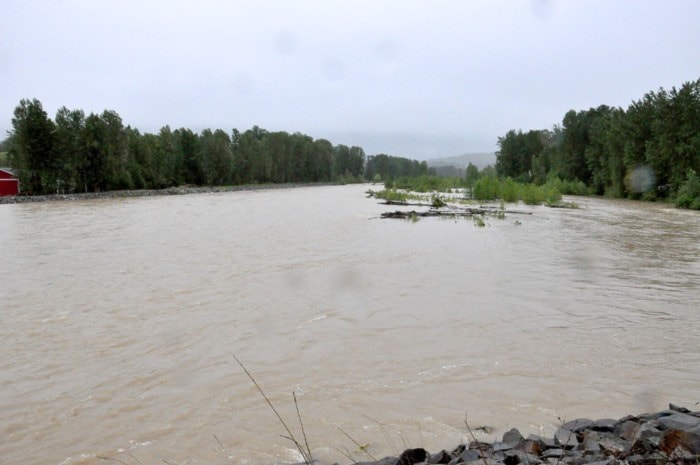Last week’s heavy rains and snow melts resulted in orders to declare emergencies in the Slocan Valley, Crawford Creek and Goat River areas, Regional District of Central Kootenay chair John Kettle said on Monday.
Kettle expressed concern that the Goat River near Highway 21 has become a recurring problem.
“This is a self-inflicted problem in my opinion,” he said. “It needs remediation, not fixes after the flood damage has been done.”
Federal regulations to protect fish habitat are to blame, Kettle said, and he wants the issue addressed before another season of flooding affects property and animal owners.
“To preserve every inch of a river and call it fish habitat is ridiculous,” Kettle said, adding that he did get Department of Fisheries and Oceans approval to move in equipment to prevent further erosion to the river banks last week.
“Our senior levels of government are willing to spend millions of dollars after the damage is done, but they won’t spend anything to prevent it — it doesn’t make sense.”
Kettle said he has asked for a meeting with Kootenay-Columbia member of Parliament David Wilks and officials from the ministries of environment, and fisheries and oceans.
“I want to see a plan in place to mitigate now instead of spending millions after there is a major flood,” he said. “I hope we can arrive at a reasonable solution to where everyone is satisfied.”
Kettle is working on a proposal that would see the construction of a Kokanee fish hatchery placed on the river’s south channel. It would be operated by the Lower Kootenay Band (LKB), he said, and help to restock Kootenay Lake. His plan would include shoring up riverbanks that are now susceptible to erosion, threatening property and animals whenever spring runoffs are high.
“We could create long-term sustainability for Kootenay Lake and get it back to where it used to be as a fish habitat, add employment for the LKB and protect property owners,” he said. “It would be a win-win.”
